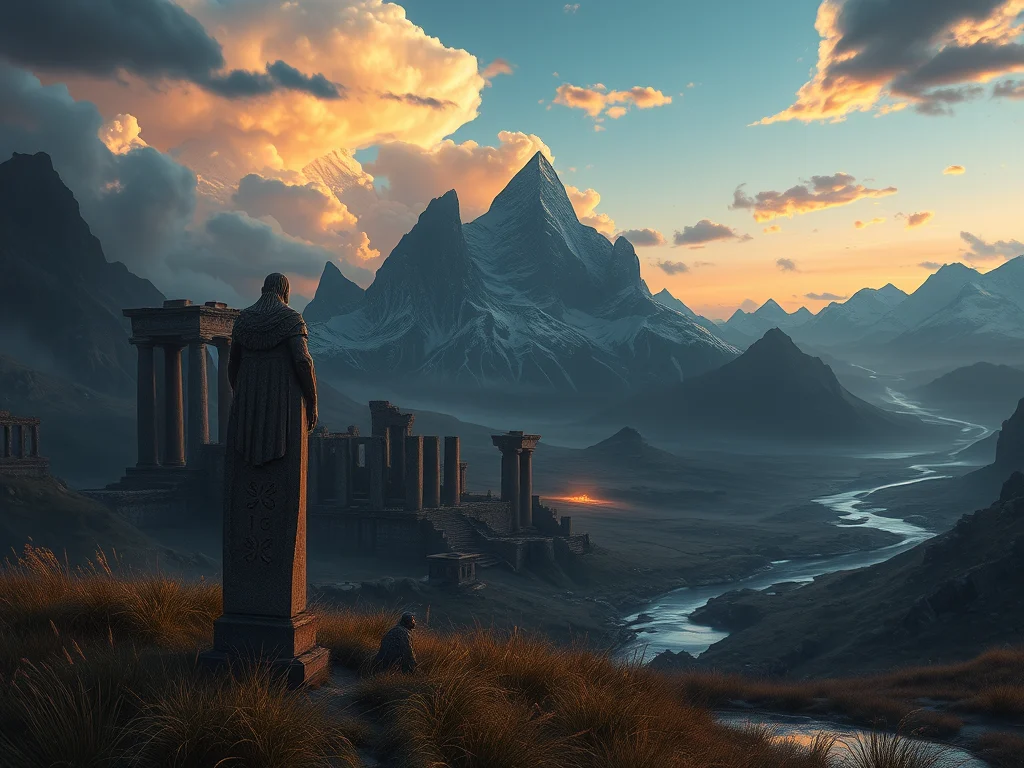Divine Currents of the World
A Summary by Aleryn Duskwhisper, Keeper of the Aelorian Archives
The gods of Khassid are not singular creators in the mold of ancient myths, nor are they wholly the inventions of mortals. Rather, they are eternal forces given voice and form through perception—shaped first by divine will, then by the eyes of those who walk the world.
It began with Aeru, the first to awaken—an infinite awareness that stirred before time, perceiving the void and responding not with fear, but with design. From that awareness arose Antaz and Sujaz, elemental twins who formed the world from breath and stone, from wave and flame. Yet even they could not contain the fullness of creation, for from the margins of their craft sprang the Wild—a force untamed, ever present in root and bone, howl and storm.
Later gods—those named and worshipped today—did not arise in that first breath of the world. They emerged as mortals came to understand the deeper rhythms of existence. When time was no longer just passing, but measured, Illario took form. When death became more than loss—when it became ritual, law, and fear—Luzion was seen. The gods are thus shadows of the eternal, given edges by mortal thought and belief.
As Illario once explained in a rare moment of candor:
“We are creators and created, bound to the tapestry even as we weave it. The energies we embody have always been—but it was not until mortals named the storm, the fire, the end, that we became the Stormlord, the Flamebearer, the Final Watcher. In naming us, they allowed us to see ourselves.”
This divine reflexivity holds true for most of Khassid’s peoples—humans, the Syl’Aeris, the Felden, and even the Varnokh. They perceive aspects of the divine through the lens of their histories, their struggles, their triumphs, and their deepest fears. In this way, the gods they revere are not wholly separate entities but rather reflections of their collective soul, molded by story and experience.
We Syl’Aeris see the divine as inseparable from duality—light and shadow, memory and forgetting, presence and absence. Our gods manifest as harmonious contradictions, echoing the balance we strive for between the realms of Aelindor and the mortal plane. Their voices move between silence and song, between stars and soil, shaping and shaped by the great cycle of soul and spirit.
The Felden, wise in the quiet truths of hearth and harvest, see the divine in cycles, kinship, and the sacred rhythm of life’s unbroken thread. Their pantheon honors memory, protection, and the enduring strength of community and tradition.
To the Varnokh, shaped by betrayal, war, and exile, the gods are not distant arbiters but ancestral powers—gods of fire-tested will, abyssal endurance, and earned strength. Their deities are not merely worshipped, but contended with, honored in blood, endurance, and the forging of identity through hardship.
Yet one people differ.
The Karnathi do not name their gods as others do. They attune themselves to the Fourfold Flow—the same primeval energies born of Aeru’s original awakening. To them, divinity is not personified but experienced: felt in the grain of stone, the pressure of faultlines, the warmth of the forge. They venerate balance, rhythm, and integrity, not idols or avatars.
In this way, the Karnathi stand as living witnesses to the world’s oldest memory—a time before gods had faces, when even the divine was still listening for its own name.
